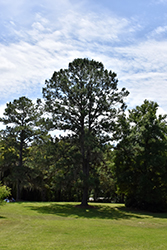It's all about ...
plants

Height: 40 feet
Spread: 20 feet
Sunlight:
![]()
Hardiness Zone: 5a
Other Names: Scrub Pine, Spruce Pine, Jersey Pine
Description:
This adaptable evergreen grows broad and pyramidal when young, becoming flat-topped and horizontal with age; requires selective pruning for shape; a great landscape specimen with its interesting, open branched form
Ornamental Features
Virginia Pine has attractive green foliage with hints of chartreuse on a tree with an upright spreading habit of growth. The needles are highly ornamental and turn yellow in the fall, which persists throughout the winter. The tan fruits which fade to dark brown over time are held in cones from late summer to late winter. The fruit can be messy if allowed to drop on the lawn or walkways, and may require occasional clean-up. The rough dark brown bark adds an interesting dimension to the landscape.
Landscape Attributes
Virginia Pine is an evergreen tree with an upright spreading habit of growth. Its average texture blends into the landscape, but can be balanced by one or two finer or coarser trees or shrubs for an effective composition.
This is a relatively low maintenance tree. When pruning is necessary, it is recommended to only trim back the new growth of the current season, other than to remove any dieback. It is a good choice for attracting birds to your yard, but is not particularly attractive to deer who tend to leave it alone in favor of tastier treats. Gardeners should be aware of the following characteristic(s) that may warrant special consideration;
- Insects
- Disease
Virginia Pine is recommended for the following landscape applications;
- Accent
- Shade
- Hedges/Screening
Planting & Growing
Virginia Pine will grow to be about 40 feet tall at maturity, with a spread of 20 feet. It has a low canopy with a typical clearance of 3 feet from the ground, and should not be planted underneath power lines. It grows at a medium rate, and under ideal conditions can be expected to live for 65 years or more.
This tree should only be grown in full sunlight. It prefers dry to average moisture levels with very well-drained soil, and will often die in standing water. It is considered to be drought-tolerant, and thus makes an ideal choice for xeriscaping or the moisture-conserving landscape. This plant should be periodically fertilized throughout the active growing season with a specially-formulated acidic fertilizer. It is particular about its soil conditions, with a strong preference for sandy, acidic soils. It is somewhat tolerant of urban pollution, and will benefit from being planted in a relatively sheltered location. This species is native to parts of North America.
This plant is not reliably hardy in our region, and certain restrictions may apply; contact the store for more information.
